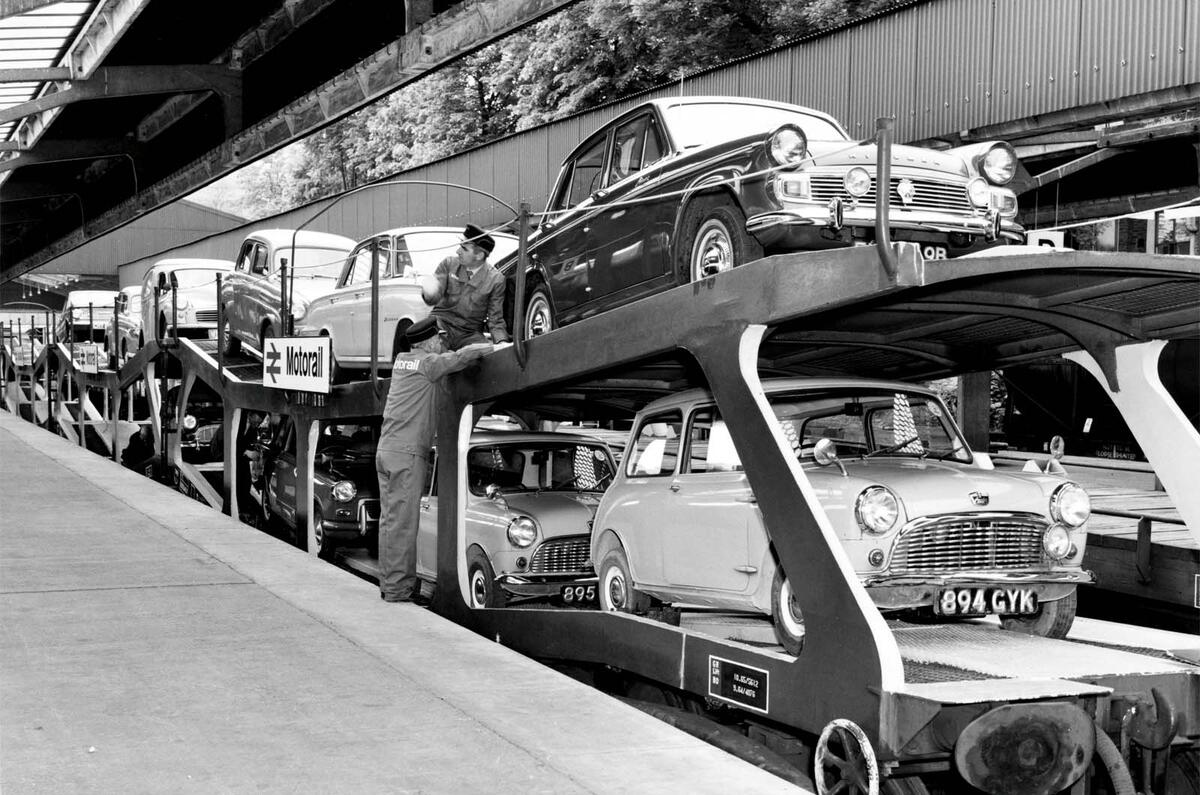The Channel Tunnel’s Le Shuttle service is a marvel, saving drivers hassle and several hours on a ferry, and even after 30 years it’s still something of a novelty to drive your car onto a train carriage.
But did you know that such services used to be available across the UK?
As far back as the 1930s, drivers could arrange to have their cars loaded onto flat-bed wagons as part of sleeper trains between London and Scotland.
Then, in 1955, British Rail (BR) introduced a scheduled service called the Car-Sleeper Limited that proved an instant hit. Autocar tried it in 1957, when the service had been extended to continue through the winter.
We were pleased to find there was no queue when we arrived at the loading platform at King’s Cross station, arrival times being staggered. Our car was then driven by a BR employee up a ramp and through the carriages, wherein it was held by bars fore and aft of the wheels.
Three cars were loaded per carriage, even though there was usually room for four, so that drivers of all cars would pay equal fares. While loading was done, we were able to enjoy a drink, a meal and even a smoke in the restaurant – although we regretted it when given a big supper once on board.
Our train departed at 8.05pm and puffed all the way to York before needing to stop, at the equivalent of a 52mph average on main roads. “It would need a fast car and some spirited driving to equal that,” we noted, Britain still being two years from opening its first motorway.
On our 5.30am arrival in Perth, we and the other passengers had breakfast while BR staff warmed up and then unloaded our cars.
It cost us just under £15 (about £307 in today’s money), and a return ticket would have been scarcely dearer. To have driven would have cost about 10.5p per mile, we reckoned, compared with 4.5p for the train. Plus, of course, we arrived in Perth feeling rested and in fine spirits for the next day’s driving.
Enjoy full access to the complete Autocar archive at the magazineshop.com
The other destinations were Aberdeen, Dover, Edinburgh, Inverness, Manchester, Newcastle, St Austell (Cornwall), York and even Boulogne, via a ferry, where you could change onto French services.
In 1966, we said: “Since we went on that pioneering run, the idea of taking the car with you while you go by train on the long run to your holiday centre has caught on and is now the popular method for thousands. Each year the services have been revised and expanded. Now a big effort has been made to capture still more of the potential market.”






Join the debate
Add your comment
If it died in 1995, what service took my BMW from Padington to Penzance in 2002?I also managed to catch one of the last Channel hovercrafts
This would work now, if reasonably priced. But it wouldn't be...
I'd have thought a service like this could have a place in today's society to help relieve some of the EV range anxiety. Drive to the train, do the long journey in comfort and your car's fully charged by the time you arrive!